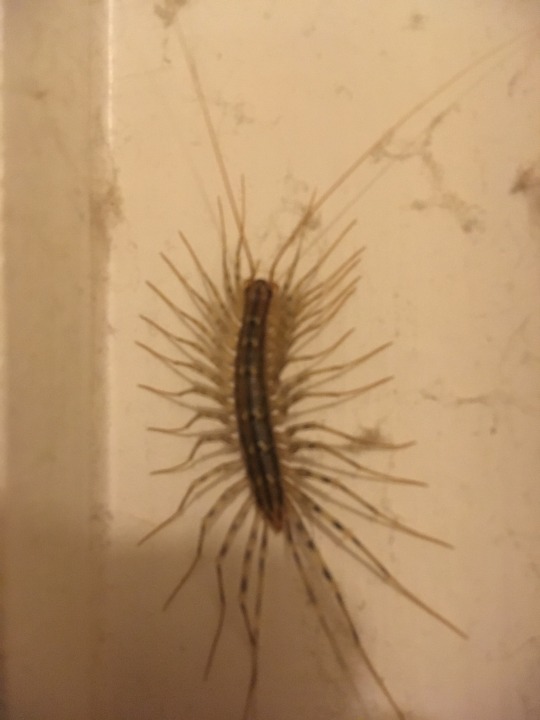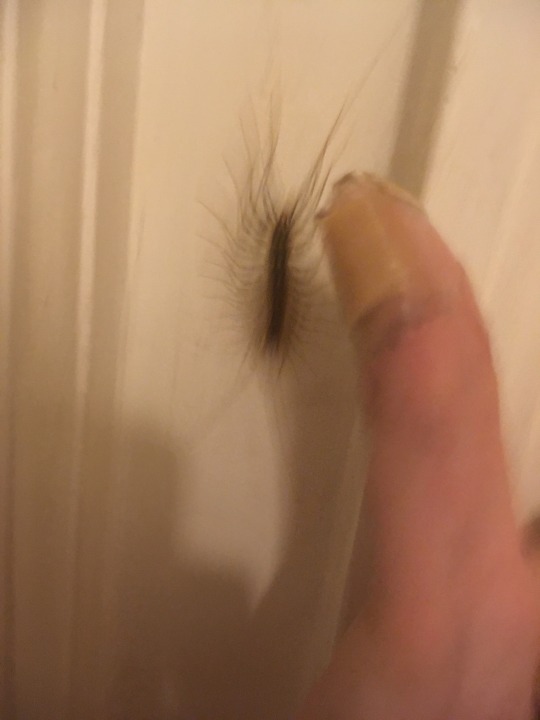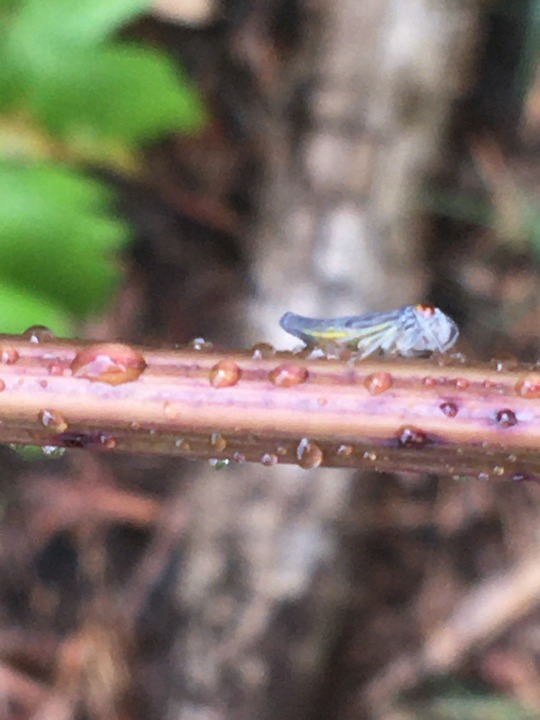#enchenopa
Explore tagged Tumblr posts
Photo

The thorn bug enchenopa, here spelled "euchenopa."
Source details and larger version.
Some very weird vintage insects are collected here.
148 notes
·
View notes
Text


Bug of the Day
Check out this pointy nug!! I tried to pick at it, thinking it was a weird growth on the goldenrod stem, and it moved! I believe this is wide-footed treehopper, Enchenopa latipes.
#Wide-footed Treehopper#Enchenopa latipes#Enchenopa#Membracidae#Membracid#treehopper#insect#bug#Hemiptera#bug of the day#BotD#pointy nug
137 notes
·
View notes
Note
Can you give me some really interesting leafhoppers?
I have a few cool little plant/leaf/tree hoppers for you...

Oak Treehopper (Platycotis vittata), family Membracidae, Sarasota, Florida, USA
photograph by Matthew Cicanese

Treehopper (Enchenopa sp.), family Membracidae, Owen County, Indiana, USA
photograph by Rick Malad

Orange-striped Rounded Planthopper (Hemisphaerius interclusus), family Issidae, Viet Nam
photograph by Anh Tuan Vo

Treehopper (Adippe zebrina), family Membracidae, Costa Rica
photograph by explorewithdara

Planthopper (Neomelicharia consociata), family Flatidae, Indonesia
photograph by emskakoon

Amazonian Treehopper (Bocydium globulare), family Membracidae, Ecuador
photograph by Andreas Kay
721 notes
·
View notes
Note




Some friends I found, ID optional. I simply wish to share
(Finger for scale on the centipede)
big female Scutigera coleoptrata,
Enchenopa binotata group (not sure what it’s eating, but there’s no names yet for the different undescribed species that specialize on different foods),
and a juvenile Oncometopia, probably orbona.
56 notes
·
View notes
Text





I saw several small Two-Marked Treehoppers (Enchenopa binotata) out on the woodlot this afternoon. They are tough to photograph.
#nature#my photography#treehopper#nature photography#two marked treehopper#wildlife photography#insect#backyard nature#woodlot
8 notes
·
View notes
Text










Wide-Footed Treehopper (nymph) - Enchenopa latipes
Previously, the blog showcased the adult stage of this insect in an urban setting. It was mentioned in that post that it would be interesting to see multiple individuals settled on a plant, mimicking the appearance of thorns nestled against multiple stems. Having stumbled upon this aggregation of Treehopper nymphs, I can finally share such a scenario. What I didn't expect was to find this many nymphs in one area, and with green abdomens. Since these nymphs have those green abdomens and front-facing horns, they can be verified as Wide-Footed Treehoppers. As nymphs, they lack the wings that would cover their abdomen, but will receive them after another molt (or so). Until their final molt arrives, these plant-loving Bugs are well guarded, not just by camouflage, but also from some help outside the anthill. This allows them to remain steadfast and feed on the fluids inside these goldenrod stems. Normally, attracting the attention of Ants would spell trouble for the insects unfortunate enough to be in their path. However, if the Ants can be placated, they can become docile (to a degree).
As mentioned in the previous post, and other posts regarding similar Hopper-type insects, as they feed (generally the nymphs) on plant fluids, the metabolic process results in excretion of honeydew from their rear. This sugary liquid is of great value to other insects as an energy source, so when it's out in the open, it's a massive beacon for other insects to come and investigate. Winged Hymenopterans and other nectar-loving insects can be first to arrive and will slurp the honeydew up while they can (for example, this metallic hunter found a substantial source of honeydew on some milkweed). Opportunists need to move quickly, as when Ants arrive, they will relay the colony to bring reinforcements. Even the most determined insects know not to trifle with Fire Ants and their swarming bites! With multiple workers patrolling the honeydew cache, it is quite unreachable by other insects. As they guard, the Ants will tend to the Treehopper nymphs, ensuring they are intact and protected. As they do, they will collect the excreted honeydew and deliver it back to the colony. This process is labor-filled, but very rewarding, and the Treehopper nymphs can feed without provocation from insectivores, even those who see through their thorny guise.
Pictures were taken on July 1, 2024 with a Google Pixel 4.
#jonny’s insect catalogue#ontario insect#wide footed treehopper#treehopper nymph#wide footed treehopper nymph#treehopper#hopper#thorn mimic treehopper nymph#thorn mimic treehopper#thorn bug#hemiptera#auchenorrhyncha#true bug#insect#toronto#july2024#2024#entomology#nature#invertebrates#arthropods#ant#european fire ant#fire ant#photography#animals
4 notes
·
View notes
Text
Genny treehopper (Enchenopa gennyae) and Andean Choco treehopper (Enchenopa chocoandina) from Ecuador
Enchenopa gennyae y Enchenopa chocoandina de Ecuador
Cigarrinha Genny (Enchenopa gennyae) e Cigarrinha Andina Choco (Enchenopa chocoandina) do Equador
Enchenopa gennyae et Enchenopa chocoandina d'Équateur
厄瓜多尔的黄背树蝉 (Enchenopa gennyae) 和安第斯乔科树蝉 (Enchenopa chocoandina)
來自厄瓜多爾的傑尼角蟬 (Enchenopa gennyae) 和安第斯巧克力角蟬 (Enchenopa chocoandina)
Genny-Bäumchenzikade (Enchenopa gennyae) und Anden-Choco-Bäumchenzikade (Enchenopa chocoandina) aus Ecuador
इक्वाडोर से जेनी ट्रीहॉपर (एनचेनोपा गेन्या) और एंडियन चोको ट्रीहॉपर (एनचेनोपा चोकोएंडिना)
Genny-boomcicade (Enchenopa gennyae) en Andes-choco-boomcicade (Enchenopa chocoandina) uit Ecuador
エクアドル産のゲンニーツノゼミ(Enchenopa gennyae)とアンデスチョコツノゼミ(Enchenopa chocoandina)
Cicalina Genny (Enchenopa gennyae) e Cicalina Andina Choco (Enchenopa chocoandina) dall'Ecuador
ইকুয়েডর থেকে জেনি ট্রিহপার (এনচেনোপা জেনিয়া) এবং অ্যান্ডিয়ান চোকো ট্রিহপার (এনচেনোপা চোকোঅ্যান্ডিনা)
Wereng Genny (Enchenopa gennyae) dan wereng Andean Choco (Enchenopa chocoandina) dari Ekuador
에콰도르의 제니 트리호퍼(Enchenopa gennyae)와 안데스 초코 트리호퍼(Enchenopa chocoandina)
Горбатка Дженни (Enchenopa gennyae) и горбатка Андского Чоко (Enchenopa chocoandina) из Э��вадора
Chuột nhảy Genny (Enchenopa gennyae) và chuột nhảy Andean Choco (Enchenopa chocoandina) từ Ecuador
Dlium theDlium
0 notes
Photo

"Enchenopa Demarest" Série macro fotografia #art #arte #foto #photo #fotografia #photographic #kennedyanjos #flores #flawers #macro #macrophotography #insetos #enchenopa #nature #natureza #nofilter #soul #mymind #mydream #myeverything https://www.instagram.com/p/CLZ1N0WA50b/?igshid=pwq1cdmq79rk
#art#arte#foto#photo#fotografia#photographic#kennedyanjos#flores#flawers#macro#macrophotography#insetos#enchenopa#nature#natureza#nofilter#soul#mymind#mydream#myeverything
0 notes
Photo

Then a two-marked treehopper (Enchenopa binotata) showed up! #treehopper #enchenopa #membracidae #insectagram #insectsofinstagram #hiking #illinois #arthropod #arthropods #arthropodsanonymous #lifeintheundergrowth #summer #midwest #forestedge #critters #macro_captures #insect_macro #insect_perfection #biology
#insect_macro#enchenopa#arthropods#lifeintheundergrowth#biology#insectsofinstagram#forestedge#summer#midwest#hiking#membracidae#arthropod#critters#insect_perfection#illinois#arthropodsanonymous#treehopper#insectagram#macro_captures
14 notes
·
View notes
Photo

Found in my day lilies
Two-marked Treehopper (Complex Enchenopa binotata)
July 5, 2020
Southeastern Pennsylvania
#bug#bugs#photographers on tumblr#Complex Enchenopa binotata#Enchenopa binotata#treehopper#two-marked treehopper#bugblr#entomology
262 notes
·
View notes
Video
Treehoppers, Enchenopa gracilis? Membracidae with tending Ants by Andreas Kay Via Flickr: from Ecuador: www.youtube.com/AndreasKay
#Andreas Kay#ant#Ecuador#Enchenopa gracilis?#Formicidae#Hemiptera#Hymenoptera#Membracidae#Treehopper
13 notes
·
View notes
Photo

Two-marked Treehopper (Enchenopa binotata)
Ryan Hodnett | CC BY-SA 4.0 | Original on Wikimedia Commons
#creative commons#two-marked treehopper#Enchenopa binotata#Darth Vader#Enchenopa#treehoppers#Membracidae#Membracoidea#Auchenorrhyncha#true bugs#bugs#Hemiptera#insects#Insecta#arthropods#Arthropoda#animals#Animalia#nature#photography#photographers on tumblr#original photographers
1 note
·
View note
Photo

How Trees Are Shaping Treehoppers
The sessile nature of plants means that they are strongly shaped by their environment. Natural selection is constantly at work on plants but that doesn’t mean that plants don’t shape their environment as well.
When I think about the impact of plants on resident animal communities, I am always reminded of a quote by artist Terence McKenna, “Animals are something invented by plants to move seeds around.” Now, I realize that the animal kingdom got its start long before plants came onto the scene but there are many threads of truth to this quote.
Take, for instance, the case of the two-marked treehopper (Enchenopa binotata). This wonderful little insect enjoys a distribution that encompasses much of North and Central America, ranging from Canada down into Panama. Not only do these treehoppers look cool with their intriguing color pattern and that thorny pronatum, but their ecology and evolutionary history is absolutely fascinating as well.
The existence of these treehoppers is entirely tied to the trees on which they live and breed. Moreover, while the two-marked treehopper may look like a single species, it is actually a complex of multiple cryptic “species” whose entire identity is owed to their preferred host tree...
Read more: https://www.indefenseofplants.com/blog/2020/7/6/how-trees-are-shaping-treehoppers
Photo: Judy Gallagher | Wikipedia CC
13 notes
·
View notes
Text

Treehopper, Enchenopa sp., family Membracidae, Owen County, Indiana, USA
photograph by Rick Malad
135 notes
·
View notes
Photo

computer... enhance.

Enchenopa binotata, two-marked treehopper. on my shovel handle, which isn’t a tree anymore. sorry bud.
bonus: !

10 notes
·
View notes
Text


@mxkoifish submitted: this funky little friend landed on my book while i was reading outside. I'd love to know what they are, they have a weird little shape i haven't seen before! in eastern minnesota, june, and if time of day helps it was just starting to get dark
A fancy little treehopper with a nice hat! They are a two-marked treehopper, Enchenopa binotata, and I love them :)
109 notes
·
View notes